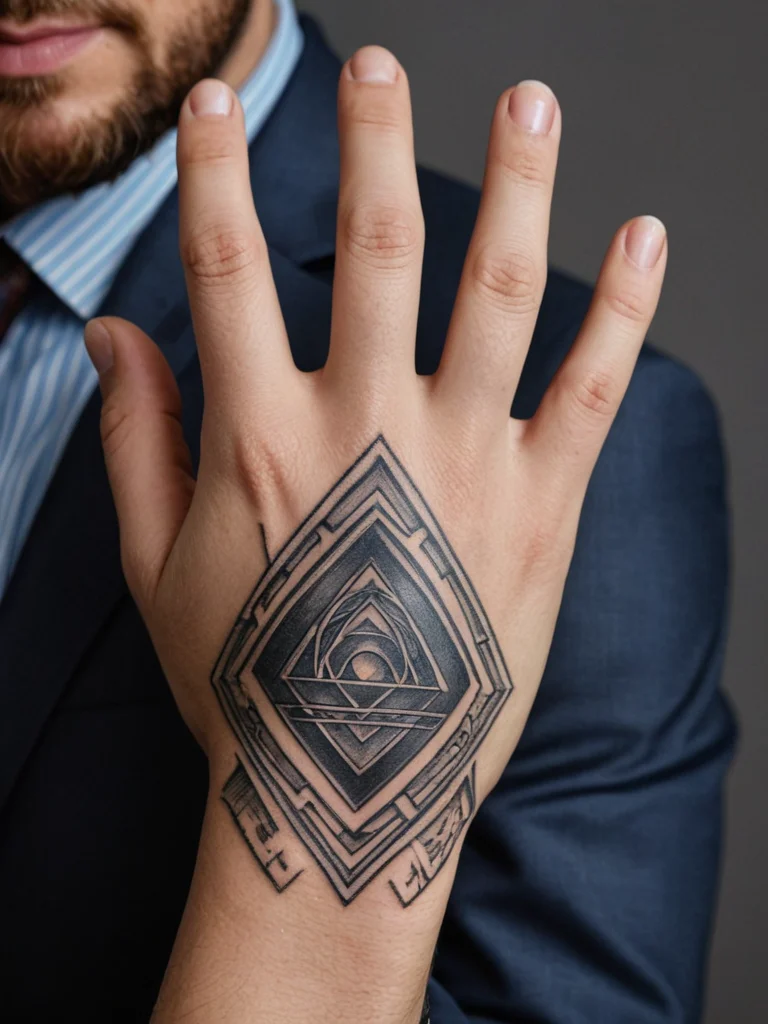The world of professional attire and personal expression has long been a complex dance. For decades, tattoos were often seen as a mark of rebellion, a symbol of counterculture, or even a sign of unprofessionalism, particularly in more conservative industries. However, as societal norms evolve and the art of tattooing becomes more mainstream and widely appreciated, this perception is undergoing a significant transformation. What was once a barrier to career advancement is increasingly becoming a non-issue, or even a point of conversation, in many professional environments. This shift reflects a broader cultural movement towards embracing individuality and recognizing that personal style, including visible tattoos, does not inherently diminish one’s skills, dedication, or competence.
The tattoo taboo is slowly but surely fading.
Many professionals now sport tattoos, from subtle designs hidden beneath clothing to intricate, eye-catching artwork that is proudly displayed. This evolving acceptance is not just about tolerance; it’s about a genuine re-evaluation of what constitutes professionalism. Today, many employers and colleagues understand that a person’s creativity, work ethic, and ability to contribute are not dictated by the presence or absence of ink on their skin. The emphasis is shifting from outward appearances to tangible skills and contributions, allowing a more diverse range of individuals to feel comfortable and confident in their workplace identity.
Historical context: from ‘unprofessional’ to ‘uniquely you’
Historically, tattoos carried a very different cultural weight. In many Western societies, they were primarily associated with sailors, military personnel, circus performers, and those on the fringes of society. These groups were often viewed as outside the mainstream, and their tattoos were seen as markers of this nonconformity. As a result, the stigma attached to tattoos permeated various professional spheres, leading many individuals with ink to conceal their body art to avoid judgment or discrimination in job interviews and the workplace. This historical association created a deep-seated belief in many industries that visible tattoos were inherently unprofessional. The image of the inked individual was often one of ruggedness or perhaps even lawlessness, making it difficult for them to break into more corporate or conservative fields.
However, this narrative began to change gradually. The rise of tattoo artists as respected artisans, the increasing visibility of tattooed celebrities and public figures, and a general cultural liberalization have all contributed to dismantling the old stereotypes. People started to see tattoos not just as symbols of defiance, but as forms of personal expression, commemorative art, and deeply meaningful personal statements. This shift in understanding allowed for a broader acceptance, moving from a perception of tattoos as inherently unprofessional to viewing them as a legitimate and often beautiful aspect of personal identity. It’s a testament to how societal values and artistic appreciation can reshape long-held prejudices, making the workplace a more inclusive space for self-expression.

Navigating the modern workplace: tattoos in different industries
The landscape of professional environments is incredibly diverse, and so is the acceptance of tattoos within them. While the overall trend is towards greater acceptance, the specifics can vary significantly depending on the industry. In creative fields such as graphic design, advertising, fashion, and the arts, tattoos are often seen as a natural extension of personal style and creativity. Here, visible tattoos are frequently embraced, and artists may even be encouraged to express their individuality. These environments often value originality and unique perspectives, making tattoos a non-issue, or even a positive talking point.
In technology and startups, the culture is often more relaxed and meritocratic. While some tech companies might still lean towards more conservative dress codes, many have a ‘come as you are’ attitude. Employees are often judged more on their skills and contributions than on their appearance. Therefore, visible tattoos are generally accepted, especially in roles that are not client-facing or require significant public interaction. The focus remains on innovation and problem-solving, allowing a diverse range of personal styles to flourish.
Conversely, highly traditional sectors like finance, law, and some areas of healthcare and government may still have more conservative policies or deeply ingrained cultural expectations. In these fields, visible tattoos, especially those that are large, elaborate, or contain potentially offensive imagery, might still be viewed with caution. However, even here, perceptions are softening. Many professionals in these industries choose to get tattoos that can be easily concealed by professional attire. Furthermore, as younger generations enter these fields, bringing with them more contemporary views on personal expression, the acceptance of subtle or concealable tattoos is growing. It’s becoming more common to see professionals with small, discreet tattoos on areas like the wrist, ankle, or behind the ear, which are easily hidden during client meetings or formal occasions.
The key takeaway is that understanding the specific culture of your industry and workplace is crucial. While a tattoo might be perfectly acceptable in a marketing agency, it might require more careful consideration in a law firm. However, the overarching trend suggests that even in more traditional fields, the ability to do your job well is increasingly paramount, pushing tattoos further down the list of potential workplace concerns.

Making a statement: how to showcase your tattoos professionally
For many, tattoos are a significant part of their identity, and they wish to integrate them into their professional lives without compromising their career prospects. The good news is that in today’s evolving professional landscape, there are many ways to showcase your tattoos thoughtfully and appropriately. The first step is self-awareness and understanding your specific workplace environment. Observe your colleagues and superiors: are tattoos common? Are they visible? What is the general dress code and company culture like?
If you’re in a creative or less formal environment, you might have more freedom to display your tattoos. Consider how your tattoos contribute to your personal brand. Are they conversation starters that reflect your personality, interests, or artistic sensibilities? You might choose to pair a visible tattoo with a slightly more casual, yet still polished, outfit to create a cohesive and authentic look. For instance, a designer with a unique, artistic tattoo on their forearm might wear a well-fitting t-shirt or a short-sleeved button-down shirt, paired with smart trousers or a skirt, to let the tattoo be a subtle but present part of their professional persona.
In more conservative settings, discretion is often key, but this doesn’t mean you can’t subtly express yourself. Opting for tattoos in areas that can be easily covered by standard professional attire – such as the upper arm, back, chest, or ankles – allows you to maintain a professional appearance while still having your personal art. When you are in a situation where tattoos are acceptable, or if you have a rapport with your colleagues or clients, you might choose to wear attire that reveals a small, tasteful tattoo. For example, a bracelet could artfully conceal a wrist tattoo, or a particular neckline might subtly reveal a piece on the collarbone. The goal is to use your judgment and consider the context, ensuring your tattoos enhance, rather than detract from, your professional image.
Furthermore, the content and style of your tattoos matter. While universally accepted symbols or abstract designs are generally safer bets, tattoos with controversial, offensive, or highly niche imagery might still attract negative attention, regardless of the industry. Many tattoo artists specialize in creating custom pieces that are both meaningful to the wearer and universally appealing. If your career requires significant client interaction or public presence, it’s always wise to have a strategy for managing the visibility of your tattoos, perhaps by having a few key pieces that are easily concealed for formal occasions. Ultimately, showcasing tattoos professionally is about confidence, context, and a thoughtful approach to personal presentation.

Conclusion: embracing individuality in professional settings
The journey of tattoos from symbols of rebellion to accepted forms of personal expression in the professional world is a powerful indicator of societal change. As workplaces become more diverse and inclusive, the focus is increasingly shifting towards skills, talent, and individual contribution, rather than adherence to outdated aesthetic norms. This evolution allows individuals to bring more of their authentic selves to work, fostering environments where creativity and individuality are not just tolerated, but celebrated.
The increasing acceptance of tattoos reflects a broader cultural understanding that personal identity is multifaceted. It acknowledges that a person’s artistic choices or personal markings do not define their professional capabilities or ethical standards. For professionals with tattoos, this changing paradigm offers greater freedom to express themselves authentically. It means that considering a tattoo or displaying existing ones no longer needs to be a source of anxiety about career progression. Instead, it can be approached with confidence, knowing that professionalism is more about what you do and how you do it, than how you look.
As this trend continues, we can anticipate a future where visible tattoos are a commonplace and unremarkable aspect of professional life across most sectors. The key for professionals today is to navigate this evolving landscape with awareness and confidence. By understanding your workplace culture, making thoughtful choices about the visibility and content of your tattoos, and always prioritizing your professional performance, you can successfully integrate your personal style into your career. Embracing individuality, including our tattooed selves, enriches the professional world, making it a more vibrant, diverse, and human space for everyone.
